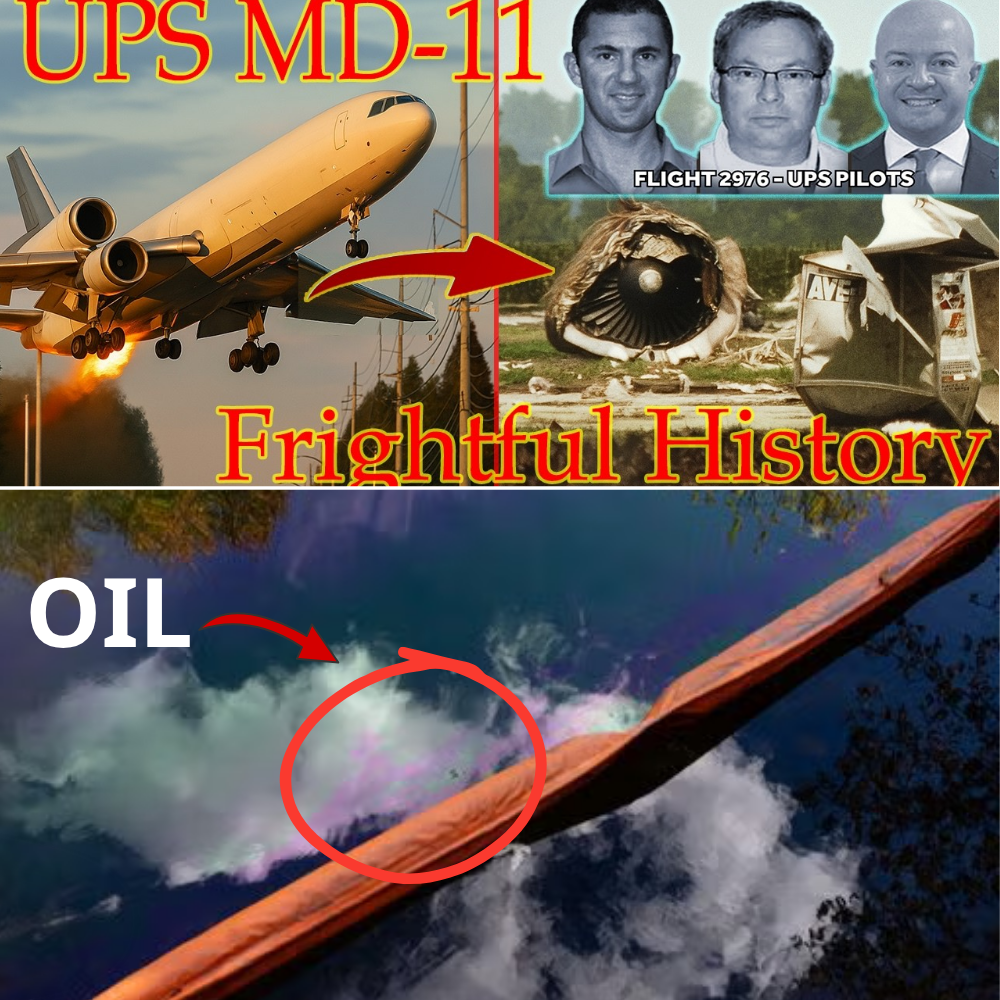
In a poignant and emotional statement that has gripped the nation, United Parcel Service (UPS) has officially identified the three courageous crew members who perished aboard UPS Flight 2976 when the massive MD-11 cargo jet tragically crashed and exploded shortly after takeoff from Louisville Muhammad Ali International Airport on November 4, 2025. The revelation comes as the death toll stands at a devastating 14, with investigators confirming a catastrophic engine separation turned a routine trans-Pacific haul into an inferno of twisted metal and flames that scorched an industrial zone south of the runway.
UPS, in a heartfelt release on November 6, named the fallen pilots as Captain Richard Wartenberg from Independence, Kentucky – a beloved local figure known for his passion for classic cars and unwavering dedication to his family; First Officer Lee Truitt from Albuquerque, New Mexico, a devoted father whose infectious smile lit up cockpits and whose love for aviation inspired countless aspiring pilots; and International Relief Officer Captain Dana Diamond from Caldwell, Texas, a seasoned veteran who stepped up for the long-haul leg to Honolulu, renowned among colleagues for her sharp wit and unyielding professionalism during grueling overnight shifts.
“It’s with great sorrow that we share the names of the UPS pilots on board UPS Flight 2976,” the company stated. “Our hearts go out to every UPSer who has been impacted and all in our Louisville community – supporting you and ensuring you receive the care and resources you need is our priority. This continues to be an incredibly sad time for our entire UPS family.” CEO Carol Tomé echoed the grief in a message to employees: “We have suffered a tragic accident involving Flight 2976. We are deeply saddened and our hearts continue to be with all who have been impacted.”
The flight, bound for Honolulu with over 38,000 gallons of jet fuel and no hazardous cargo, was accelerating down the runway when surveillance footage captured the horrifying moment: a massive plume of fire erupted from the left wing, followed by the complete detachment of the General Electric CF6 engine. The plane lurched, barely clearing the airport fence at just 475 feet and 210 mph before plummeting into Kentucky Petroleum Recycling and Grade A Auto Parts facilities. The impact unleashed a bomb-like explosion, sending debris half a mile and igniting secondary blasts that engulfed businesses in a hellish blaze visible for miles.
Eyewitnesses recounted apocalyptic scenes: “The ground shook like an earthquake, then this massive fireball rose up – it was like the end of the world,” said one worker from a nearby yard. Over 200 firefighters battled the inferno through the night, with spot fires lingering days later. The NTSB recovered the black boxes intact, revealing a warning bell in the cockpit as chaos unfolded. Preliminary probes point to undetected fatigue cracks in the engine pylon or mounting flaws in the 34-year-old airframe – echoes of past MD-11 incidents that have aviation experts demanding answers about why such aging jets remain in high-stakes service.
All three pilots died instantly in the cockpit, their final transmissions a testament to their heroism as they fought to regain control. Captain Wartenberg, a Northern Kentucky resident, leaves behind a tight-knit community in mourning; neighbors described him as the guy who’d wave from his garage, tinkering on vintage Mustangs. First Officer Truitt’s family in New Mexico shared stories of backyard barbecues where he’d regale kids with tales of soaring above the clouds. Captain Diamond, the relief pilot ensuring fresh eyes for the Pacific crossing, was a trailblazer for women in aviation, her Texas roots grounding a career that spanned decades.
The tragedy didn’t stop at the flight deck. Eleven ground victims – including a heartbreaking 3-year-old child visiting with a grandparent – were claimed by the raging fires. Among them, Louisnes “Lou” Fedon, 47, and his granddaughter Kimberly Asa, caught in the auto parts yard; John Loucks, 52, a dedicated employee vaporized in the blast. Fifteen others suffered severe burns, flooding University of Louisville Health’s burn unit into disaster mode.
Louisville, where UPS employs over 26,000 and Worldport sorts millions of packages nightly, reels as a city in shock. “This is our darkest day,” Mayor Craig Greenberg said, voice breaking. Candlelight vigils by Teamsters Local 89 drew thousands, flags at half-staff through November 9. The FAA grounded all MD-11s nationwide, with UPS and FedEx voluntarily parking their fleets – disrupting holiday shipping and exposing vulnerabilities in America’s cargo backbone.
Lawsuits loom against UPS, Boeing, and GE, alleging skipped inspections and design defects. The plane had undergone maintenance in Texas weeks prior – was a critical flaw missed? NTSB’s full report may take a year, but black box data hints at a preventable catastrophe.
As cleanup crews sift through charred remains under FBI watch, the pilots’ legacies endure: Wartenberg, the community anchor; Truitt, the family man aloft; Diamond, the relentless pro. Their stories remind us of the human cost behind every overnight delivery. UPS has set up a family assistance line (800-631-0604), GoFundMes surge, and Louisville unites in grief.
In honoring these three, we confront a sobering truth: heroes in brown uniforms risk it all so our world keeps turning. Rest in peace, Captains and First Officer – your final flight touched the heavens, but your spirits ground us forever.


